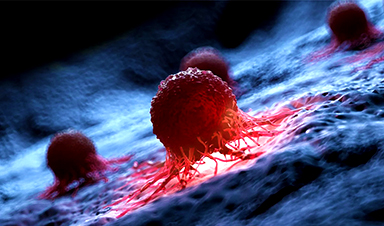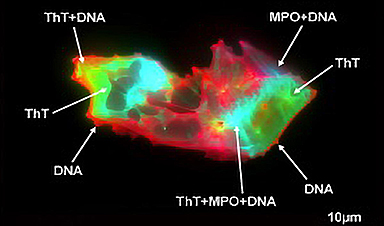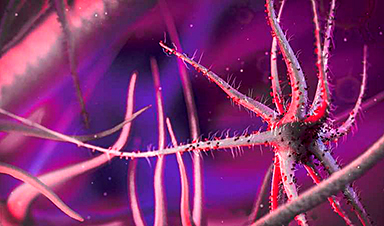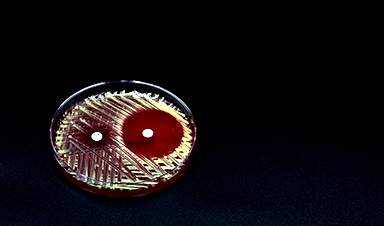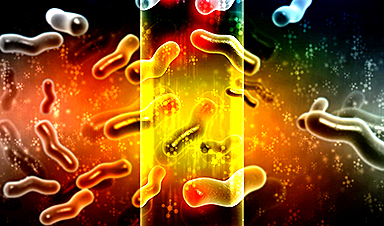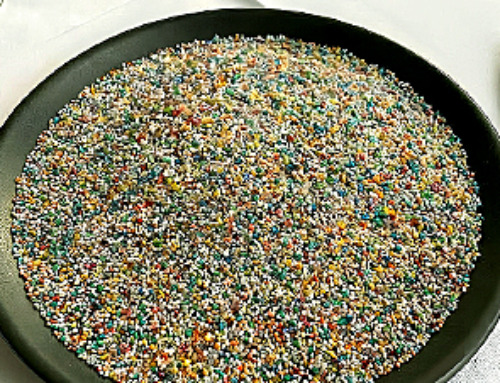How are we able to recall a word we want to say? This basic ability, called word retrieval, is often compromised in patients with brain damage. Interestingly, many patients who can name words they see, like identifying a pet in the room as a “cat”, struggle with retrieving words in everyday discourse.
Scientists have long sought to understand how the brain retrieves words during speech. A new study by researchers at New York University sheds light on this mystery, revealing a left-lateralized network in the dorsolateral prefrontal cortex that plays a crucial role in naming. The findings, published in Cell Reports, provide new insights into the neural architecture of language, offering potential applications for both neuroscience and clinical interventions.
Mapping the brain’s naming network
Word retrieval is a fundamental aspect of human communication, allowing us to link concepts to language. Despite decades of research, the exact neural dynamics underlying this process – particularly in natural auditory contexts – remain poorly understood.
NYU researchers – led by Biomedical Engineering Graduate Student Leyao Yu and Associate Professor of Biomedical Engineering at NYU Tandon and Neurology at NYU Grossman School of Medicine Adeen Flinker – recorded electrocorticographic (ECoG) data from 48 neurosurgical patients to examine the spatial and temporal organization of language processing in the brain. By using unsupervised clustering techniques, the researchers identified two distinct but overlapping networks responsible for word retrieval. The first, a semantic processing network, was located in the middle and inferior frontal gyri. This network was engaged in integrating meaning and was sensitive to how surprising a word was within a given sentence. The second, an articulatory planning network, was situated in the inferior frontal and precentral gyri, which played a crucial role in speech production, regardless of whether words were presented visually or auditorily.
Auditory naming and the prefrontal cortex
The study builds upon decades of work in language neuroscience. Previous research suggested that different regions of the brain were responsible for retrieving words depending on whether they were seen or heard. However, earlier studies relied on methods with limited temporal resolution, leaving many unanswered questions about how these networks interact in real time.
By leveraging the high spatial and temporal resolution of ECoG, the researchers uncovered a striking ventral-dorsal gradient in the prefrontal cortex. They found that while articulatory planning was localized ventrally, semantic processing was uniquely represented in a dorsal region of the inferior frontal gyrus and middle frontal gyrus – a previously underappreciated hub for language processing.
These findings suggest that a missing piece in our understanding of language processing lies in this dorsal prefrontal region. Our study provides the first direct evidence that this area is involved in mapping sounds to meaning in an auditory context.”
Leyao Yu, lead author
Implications for neuroscience and medicine
The study has far-reaching implications, not only for theoretical neuroscience but also for clinical applications. Language deficits, such as anomia – the inability to retrieve words – are common in stroke, brain injury, and neurodegenerative disorders. Understanding the precise neural networks involved in word retrieval could lead to better diagnostics and targeted rehabilitation therapies for patients suffering from these conditions.
Additionally, the study provides a roadmap for future research in brain-computer interfaces (BCIs) and neuroprosthetics. By decoding the neural signals associated with naming, scientists could potentially develop assistive devices for individuals with speech impairments, allowing them to communicate more effectively through direct brain-computer communication.
For now, one thing is clear: our ability to name the world around us is not just a simple act of recall, but the result of a sophisticated and finely tuned neural system – one that is now being revealed in greater detail than ever before.
Yu, L., et al. (2025). A left-lateralized dorsolateral prefrontal network for naming. Cell Reports. doi.org/10.1016/j.celrep.2025.115677
News
Lower doses of immunotherapy for skin cancer give better results, study suggests
According to a new study, lower doses of approved immunotherapy for malignant melanoma can give better results against tumors, while reducing side effects. This is reported by researchers at Karolinska Institutet in the Journal of the National [...]
Researchers highlight five pathways through which microplastics can harm the brain
Microplastics could be fueling neurodegenerative diseases like Alzheimer's and Parkinson's, with a new study highlighting five ways microplastics can trigger inflammation and damage in the brain. More than 57 million people live with dementia, [...]
Tiny Metal Nanodots Obliterate Cancer Cells While Largely Sparing Healthy Tissue
Scientists have developed tiny metal-oxide particles that push cancer cells past their stress limits while sparing healthy tissue. An international team led by RMIT University has developed tiny particles called nanodots, crafted from a metallic compound, [...]
Gold Nanoclusters Could Supercharge Quantum Computers
Researchers found that gold “super atoms” can behave like the atoms in top-tier quantum systems—only far easier to scale. These tiny clusters can be customized at the molecular level, offering a powerful, tunable foundation [...]
A single shot of HPV vaccine may be enough to fight cervical cancer, study finds
WASHINGTON -- A single HPV vaccination appears just as effective as two doses at preventing the viral infection that causes cervical cancer, researchers reported Wednesday. HPV, or human papillomavirus, is very common and spread [...]
New technique overcomes technological barrier in 3D brain imaging
Scientists at the Swiss Light Source SLS have succeeded in mapping a piece of brain tissue in 3D at unprecedented resolution using X-rays, non-destructively. The breakthrough overcomes a long-standing technological barrier that had limited [...]
Scientists Uncover Hidden Blood Pattern in Long COVID
Researchers found persistent microclot and NET structures in Long COVID blood that may explain long-lasting symptoms. Researchers examining Long COVID have identified a structural connection between circulating microclots and neutrophil extracellular traps (NETs). The [...]
This Cellular Trick Helps Cancer Spread, but Could Also Stop It
Groups of normal cbiells can sense far into their surroundings, helping explain cancer cell migration. Understanding this ability could lead to new ways to limit tumor spread. The tale of the princess and the [...]
New mRNA therapy targets drug-resistant pneumonia
Bacteria that multiply on surfaces are a major headache in health care when they gain a foothold on, for example, implants or in catheters. Researchers at Chalmers University of Technology in Sweden have found [...]
Current Heart Health Guidelines Are Failing To Catch a Deadly Genetic Killer
New research reveals that standard screening misses most people with a common inherited cholesterol disorder. A Mayo Clinic study reports that current genetic screening guidelines overlook most people who have familial hypercholesterolemia, an inherited disorder that [...]
Scientists Identify the Evolutionary “Purpose” of Consciousness
Summary: Researchers at Ruhr University Bochum explore why consciousness evolved and why different species developed it in distinct ways. By comparing humans with birds, they show that complex awareness may arise through different neural architectures yet [...]
Novel mRNA therapy curbs antibiotic-resistant infections in preclinical lung models
Researchers at the Icahn School of Medicine at Mount Sinai and collaborators have reported early success with a novel mRNA-based therapy designed to combat antibiotic-resistant bacteria. The findings, published in Nature Biotechnology, show that in [...]
New skin-permeable polymer delivers insulin without needles
A breakthrough zwitterionic polymer slips through the skin’s toughest barriers, carrying insulin deep into tissue and normalizing blood sugar, offering patients a painless alternative to daily injections. A recent study published in the journal Nature examines [...]
Multifunctional Nanogels: A Breakthrough in Antibacterial Strategies
Antibiotic resistance is a growing concern - from human health to crop survival. A new study successfully uses nanogels to target and almost entirely inhibit the bacteria P. Aeruginosa. Recently published in Angewandte Chemie, the study [...]
Nanoflowers rejuvenate old and damaged human cells by replacing their mitochondria
Biomedical researchers at Texas A&M University may have discovered a way to stop or even reverse the decline of cellular energy production—a finding that could have revolutionary effects across medicine. Dr. Akhilesh K. Gaharwar [...]
The Stunning New Push to Protect the Invisible 99% of Life
Scientists worldwide have joined forces to build the first-ever roadmap for conserving Earth’s vast invisible majority—microbes. Their new IUCN Specialist Group reframes conservation by elevating microbial life to the same urgency as plants and [...]



